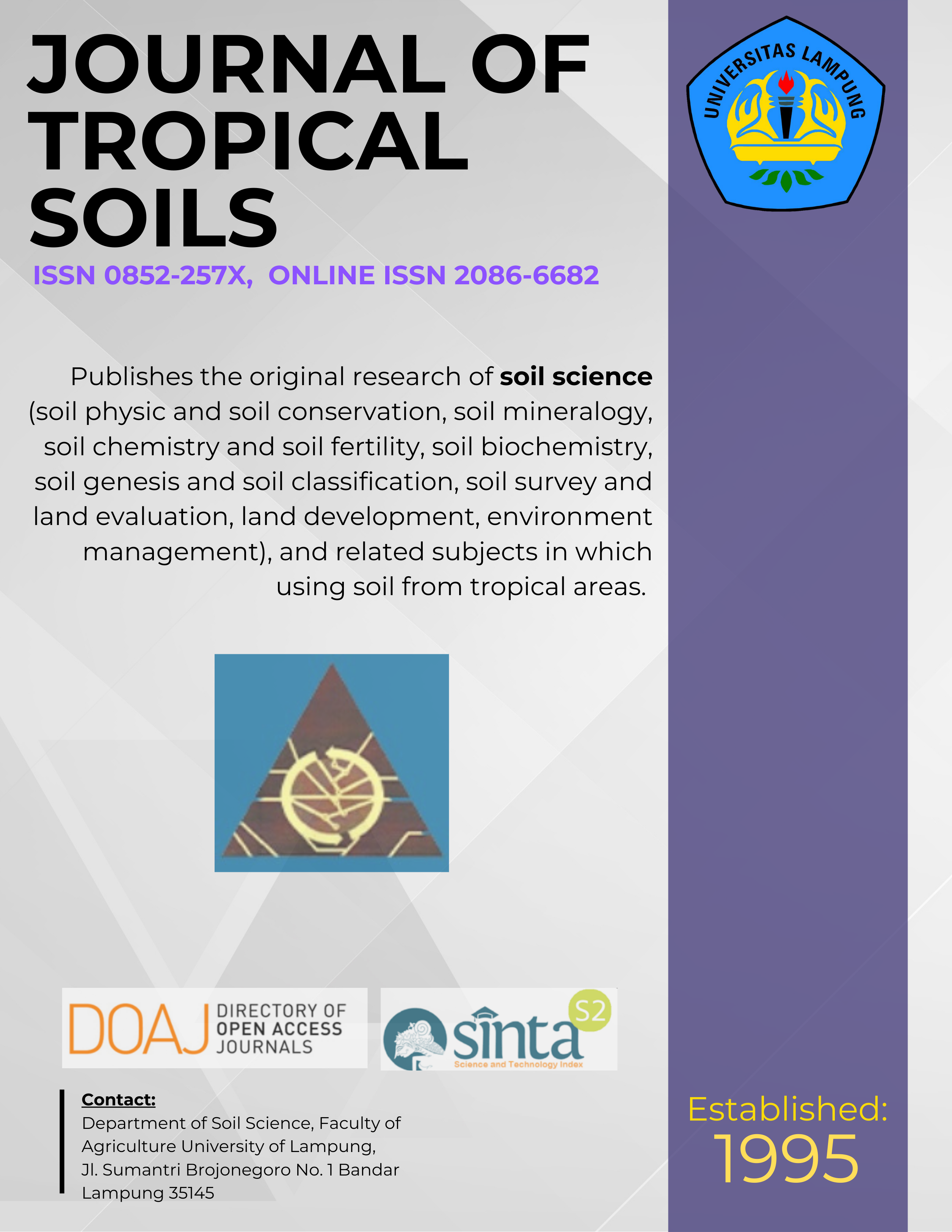Model Simulation of “Sawah-Kolam” System for Rainwater Harvesting to Support Rainfed Paddy Production
Main Article Content
Abstract
Model Simulation of “Sawah-Kolam” System for Rainwater Harvesting to Support Rainfed Paddy Production (S Triyono, Zeovany, Oktafri, and B Rosadi): The study was used to evaluate whether rainwater could be harvested and used to meet water demand of rainfed paddy. As generally known, yield of rainfed paddy was low compared to that of irrigated paddy. The study was performed by simulating a model of “Sawah-Kolam” system. Daily 10 year climatological data from Metro City of Lampung Province was used in the study. The program was written in Professional VisSim 4.0. Three scenarios of alternative planting schedules (January, February, and March) were tested. Results implied that without a collection system, rainwater might not be sufficient to grow rainfed paddy. It was demonstrated that “Sawah-Kolam” system was capable of sufficing water requirement of rainfed paddy. Huge rainwater of more than 90% could be saved, thus reducing a lot of runoff volume. In term of pond size, February appeared to be the most optimum growing season of all other months for Metro City, in that the pond area (1,400 m2) required was the smallest.
Downloads
Download data is not yet available.
Article Details
How to Cite
Triyono, S., Zeovany, ., Oktafri, ., & Rosadi, B. (2018). Model Simulation of “Sawah-Kolam” System for Rainwater Harvesting to Support Rainfed Paddy Production. JOURNAL OF TROPICAL SOILS, 15(3), 261–270. https://doi.org/10.5400/jts.2010.v15i3.261-270
Section
Articles
License for Authors
Authors who publish with this journal agree to the following terms:
- Authors retain copyright and grant the journal right of first publication with the work simultaneously licensed under a Creative Commons Attribution License that allows others to share the work with an acknowledgement of the work's authorship and initial publication in this journal.
- Authors are able to enter into separate, additional contractual arrangements for the non-exclusive distribution of the journal's published version of the work (e.g., post it to an institutional repository or publish it in a book), with an acknowledgement of its initial publication in this journal.
- Authors are permitted and encouraged to post their work online (e.g., in institutional repositories or on their website) prior to and during the submission process, as it can lead to productive exchanges, as well as earlier and greater citation of published work (See The Effect of Open Access).
License for Regular Users
Other regular users who want to cite, distribute, remix, tweak, and build upon author’s works, even for commercial purposes, should acknowledge the work’s authorship and initial publication in this journal, licensed under a Creative Commons Attribution License.

